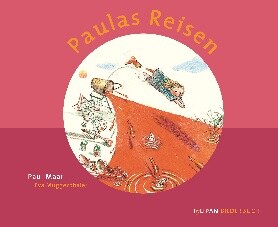Paul MaarEva Muggenthaler
Paulas Reisen
[Paula‘s Travels]

Tulipan Verlag
Munich 2016
ISBN 978-3-939944-04-1
48 Pages
Suitable for age 4 and above
Publisher’s contact details
Published in Arabic with a grant from Litrix.de.
Questions for the translator
 Samir Grees has translated Paula‘s Travels into Arabice
Samir Grees has translated Paula‘s Travels into Arabice
More
Questions for the translator
What struck you in particular about this title?
The story is told smoothly and in a compelling fashion for children. I liked her imagination and ingenuity, and also that she deals with the fate of a person who is different, outside the norm, who refuses to blindly obey, or accept that everything is uniform and dull.
What challenges do you face as an Arabic translator of a German children's book?
Rhymes and verses! The story was written by the poet Paul Maar. The greatest challenge was to translate a rhymed story written in verse into Arabic while preserving the musicality of the text. The Arabic text needed to rhyme without losing any of the content. The poet Rim Najmi, with whom I worked together on the translation, managed superbly to transform my unrhymed translation of the content into child-friendly rhymed verse.
How would you describe your role as a translator?
My role is to select texts that I consider worthwhile to translate and also worthwhile to read in Arabic, and then to translate them as faithfully and smoothly as possible into Arabic.

